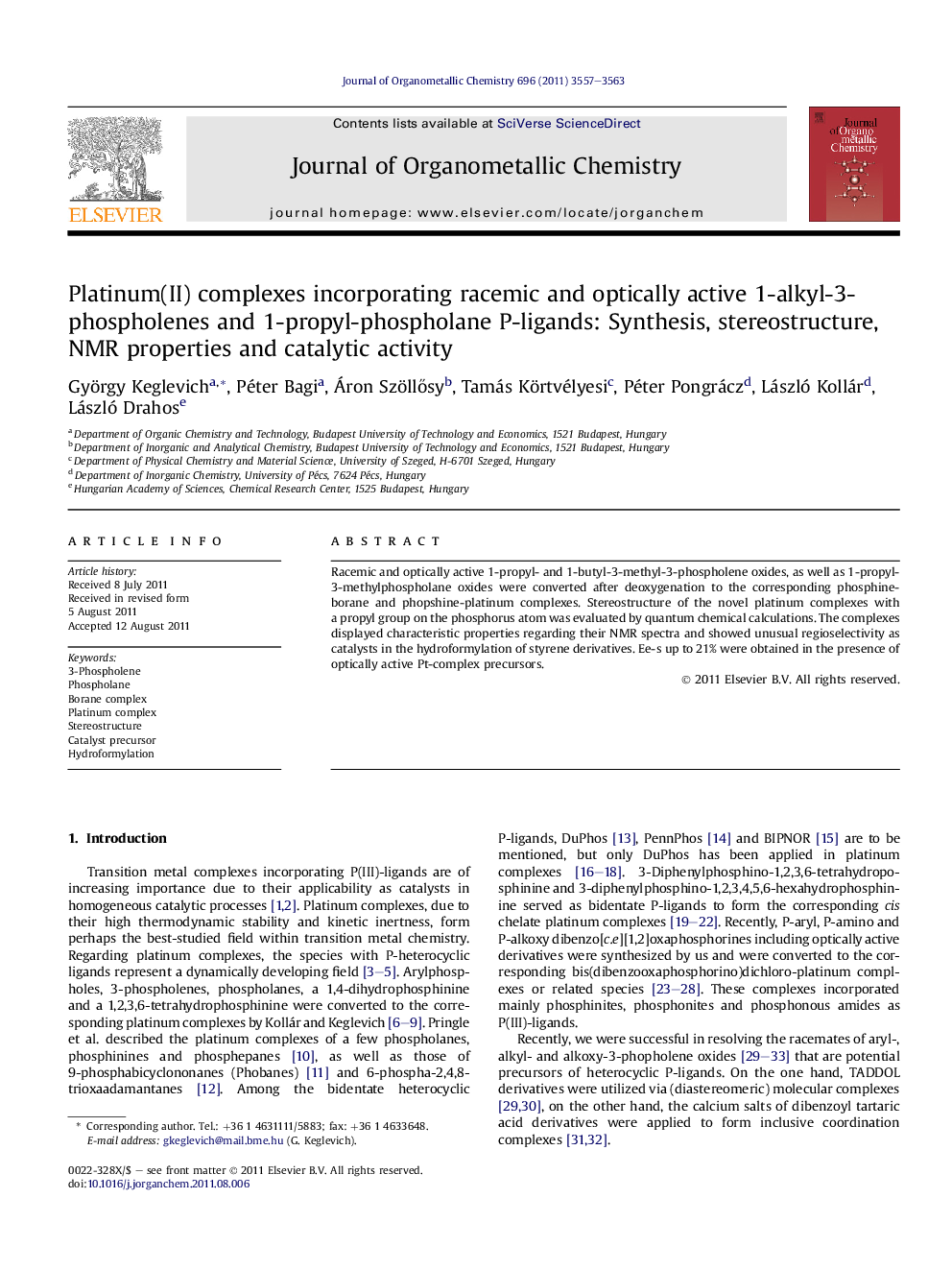| Article ID | Journal | Published Year | Pages | File Type |
|---|---|---|---|---|
| 1322245 | Journal of Organometallic Chemistry | 2011 | 7 Pages |
Racemic and optically active 1-propyl- and 1-butyl-3-methyl-3-phospholene oxides, as well as 1-propyl-3-methylphospholane oxides were converted after deoxygenation to the corresponding phosphine-borane and phopshine-platinum complexes. Stereostructure of the novel platinum complexes with a propyl group on the phosphorus atom was evaluated by quantum chemical calculations. The complexes displayed characteristic properties regarding their NMR spectra and showed unusual regioselectivity as catalysts in the hydroformylation of styrene derivatives. Ee-s up to 21% were obtained in the presence of optically active Pt-complex precursors.
Graphical abstractRacemic and optically active 1-alkyl-3-methyl-3-phospholene oxides, as well as a 3-methylphospholane oxide were converted to the corresponding phosphine-borane and phopshine-platinum complexes; the latter species showed unusual regioselectivity as catalysts in the hydroformylation of styrenes.Figure optionsDownload full-size imageDownload as PowerPoint slideHighlights► LuPhos, a recently described new bidentate P-ligand was utilized in the synthesis of novel borane and Pt-complexes. ► The stereostructure of the LuPhos–Pt complex was elucidated by high level quantum chemical calculations. ► The Pt complex of LuPhos was tested as catalyst in hydroformylation of styrenes. ► Interesting regioselectivities were obtained with the LuPhos–Pt complex.
